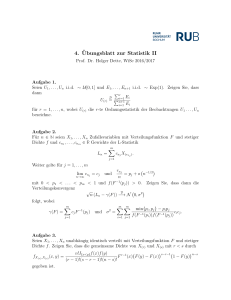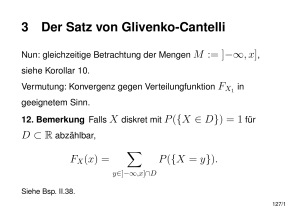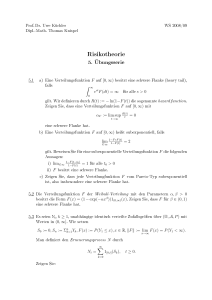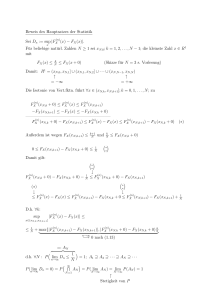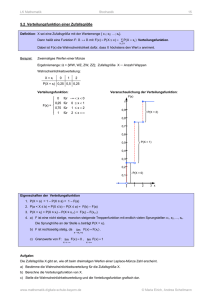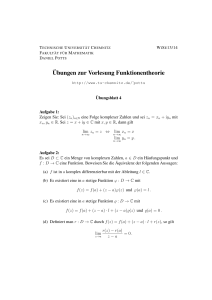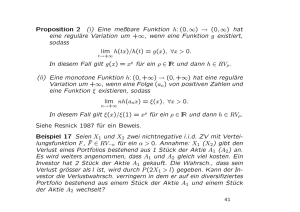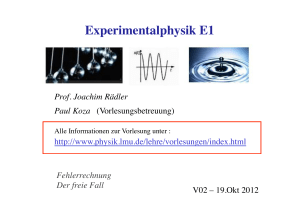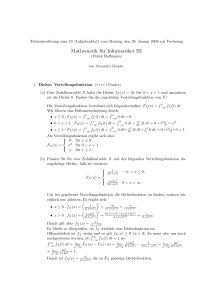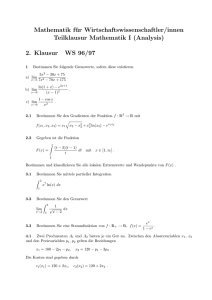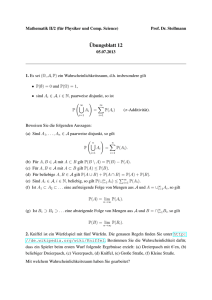Lösungen zum Tutorium in Statistik I: Theoretische Verteilung
Werbung
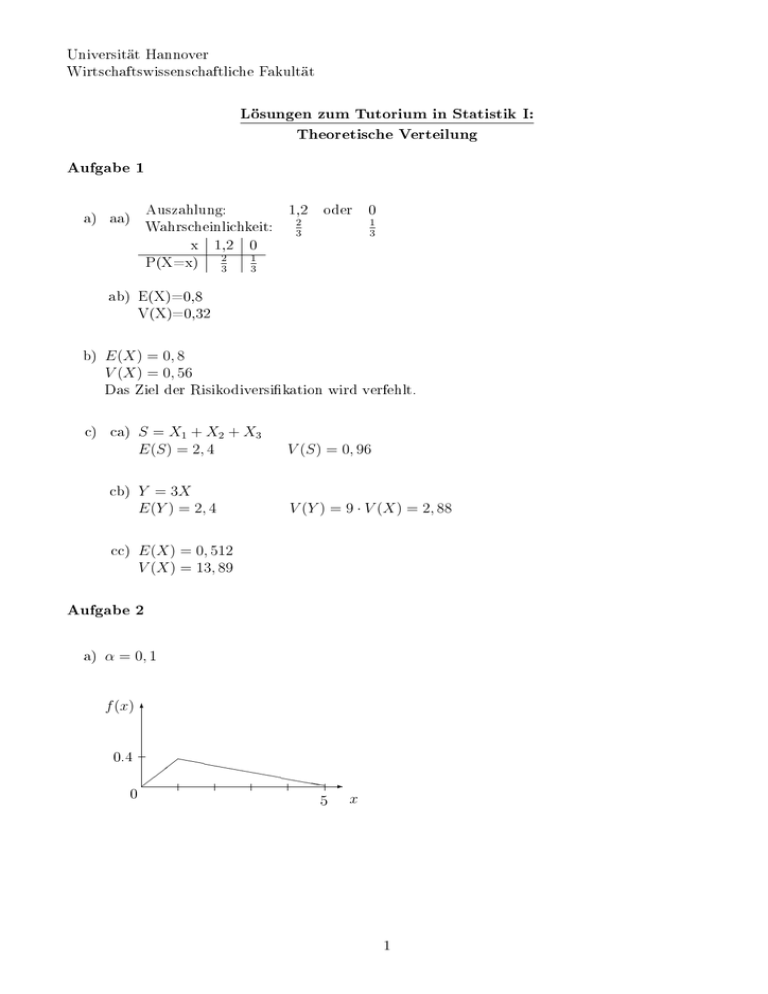
Universität Hannover Wirtschaftswissenschaftliche Fakultät Lösungen zum Tutorium in Statistik I: Theoretische Verteilung Aufgabe 1 Auszahlung: Wahrscheinlichkeit: x 1,2 0 1 P(X=x) 23 3 a) aa) 1,2 2 3 oder 0 1 3 ab) E(X)=0,8 V(X)=0,32 b) E(X) = 0, 8 V (X) = 0, 56 Das Ziel der Risikodiversikation wird verfehlt. c) ca) S = X1 + X2 + X3 E(S) = 2, 4 cb) Y = 3X E(Y ) = 2, 4 V (S) = 0, 96 V (Y ) = 9 · V (X) = 2, 88 cc) E(X) = 0, 512 V (X) = 13, 89 Aufgabe 2 a) α = 0, 1 f (x) 6 0.4 0 ``` , , , ``` ``` `` ` - 5 x 1 b) ba) P (X = 1) = 0 bb) P (0, 5 ≤ X ≤ 3) = 0, 75 bc) x0,5 = 1, 8377 bb) und bc) lassen sich auch mit Hilfe der Verteilungsfunktion ( F (x) = 0, 2x2 0≤x≤1 −0, 05x + 0, 5x − 0, 25 1 < x ≤ 5 lösen. 2 c) ca) v = 0, 5401 cb) Ṽ (X) = 1, 193 Aufgabe 3 a) aa) F(x) 1 6 ` 0,75 ` ` ` 0,5 ` 0,25 p 0 - 1 2 3 4 5 x ab) P (X > 1) = 0, 6741 b) E(X) = 2 V (X) = 1, 102 c) Z = Anzahl der Teilzeitbeschäftigten aus allen 5 Stichproben Xi = Anzahl der Teilzeitbeschäftigten in Stichprobe i (i = 1, · · · , 5) vz = 0, 2347 P P Bei Abhängigkeit der Stichproben bleibt E(Z) unverändert, aber V ( Xi ) = V (Xi ) gilt nicht mehr, so daÿ sich die Varianz verändert. Daraus folgt auch ein veränderter Variationskoezient. 2 Aufgabe 4 a) F (x) = 1 − x−3 x≥1; , stetige Zufallsvariable aa) F (1) = 1 − 1−3 = 0, lim (F (x)) = 1 − lim (x−3 ) = 1 0 f (x) = F (x) = 3x x→∞ −4 x→∞ → f (x) > 0 für x ≥ 1 → Die Voraussetzungen für eine Verteilungsfunktion sind gegeben. f(x) ½Z ½ Z 3 p ab) 1,5 1 x 1 1,5 2 2,5 b) E(X) = 2,5 2 x f (x) 3 0,5926 0,1875 0,0768 3 2 V (X) = x0,75 − x0,25 : 3 4 v= √1 3 √ 3 x0,75 = q 4 3 4 x0,25 = 3 ⇒ x0,75 − x0,25 = 0, 4868 c) Streuungsmaÿe in b): V (X); x0,75 − x0,25 ; vx • V (Y ) ' 4, 22 · 0, 75 = 3, 165 √ • vy = V (Y ) E(Y ) ; E(Y ) = 0 → vy ist nicht deniert (Division durch 0) • y0,75 − y0,25 = 1 Durch die lineare Transformation wird der Quartilsabstand auf 1 normiert. 3
